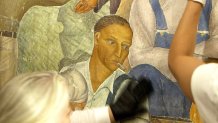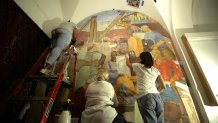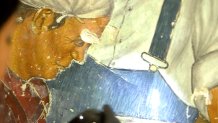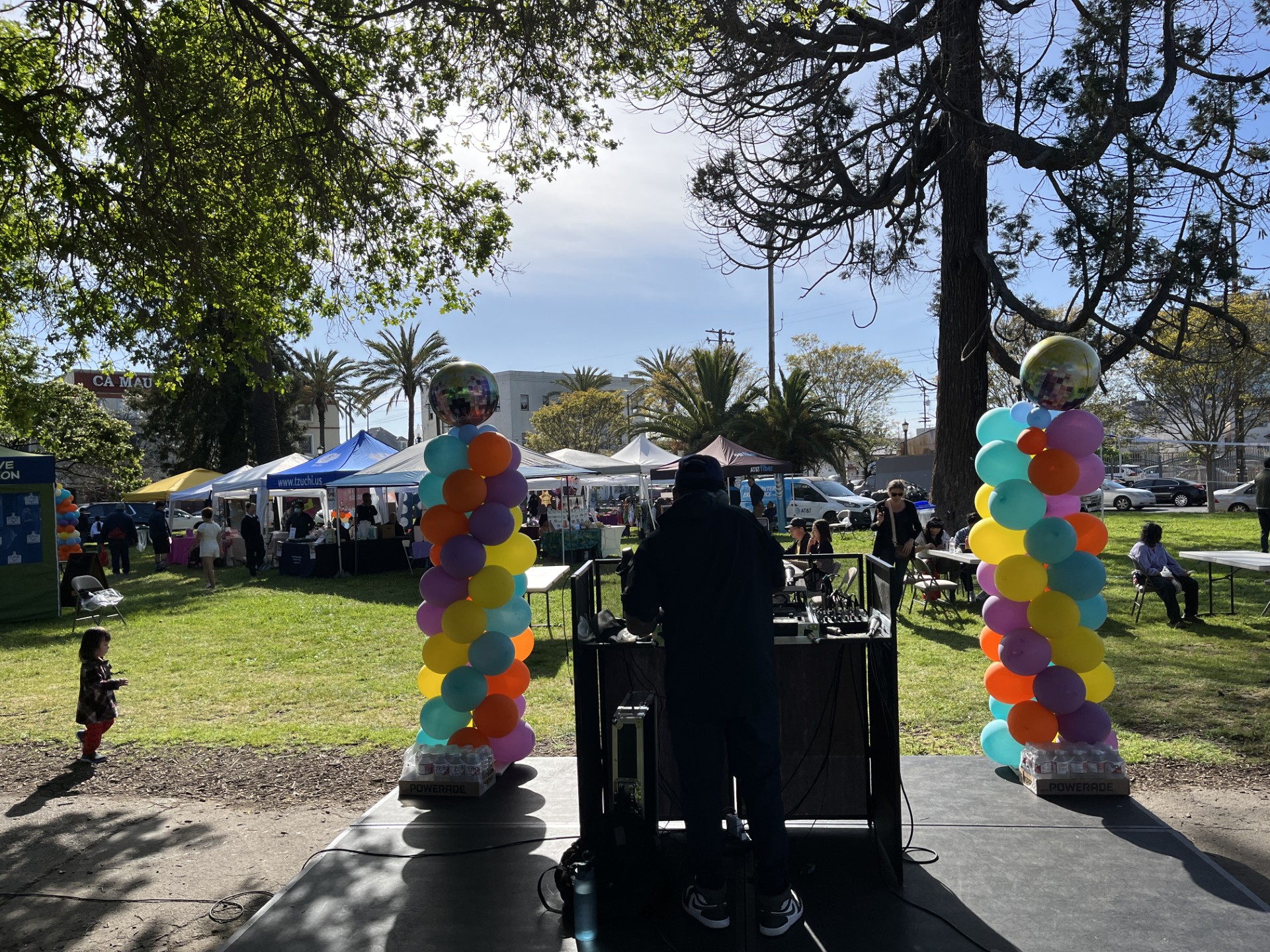The plain white walls in the hallway of the venerable San Francisco Art Institute tightly clutched their secret for more than eight decades — buried beneath a dozen layers of paint. But a new effort to turn back the decades and peel away the paint has bared one of those secrets — a fully intact 1930s fresco painted by Frederick Olmsted.
The fresco is one of a half dozen murals painted on the lower walls of the 140-year-old institution, and later painted over, likely to make way for a next generation of student art.
Olmsted’s fresco — an ancient method of painting watercolor onto wet plaster — depicts a group of workers toiling in a marble factory. The tower of the school’s Russian Hill campus is visible in the mural’s top corner — its perspective drawing from the nearby industrial neighborhood that would later become touristy Fisherman’s Wharf.

“I think it’s an important memorial to a period when San Francisco really was a working class city,” said SFAI Facilities Manager Heather Hickman Holland, “with people cutting marble right here, now where you’re buying your chowder bowl.”
It was Holland who first noticed the strange lines on the stark white hallway walls which she initially thought were cobwebs. After moving in closer with the light on her phone, she realized the lines were the profiles of faces protruding from deep beneath the paint.
“I realized there were frescoes here that we had forgotten about,” Holland said.
On wall after wall where thousands of students had filed past over the years, she found more evidence of murals. She turned her curiosity to the school’s library where she discovered a smattering of documentation showing a series of murals had been painted in the school during the New Deal era. It was the same time period that resulted in Works Progress Administration murals, which were painted in places like Coit Tower, where Olmsted also painted. The school’s own auditorium features a massive mural by Diego Rivera in 1931.

The school received a city art grant to uncover small squares of paint on the walls, revealing hints of what may lie underneath. The school eventually received grants from the Henry Mayo Newhall Foundation and the national Save America’s Treasures to finally remove the paint on the wall where Olmsted’s mural was believed to rest.
As architectural conservator Molly Lambert and her team began peeling away the paint, the faces of 1930s workers began to emerge from their long slumber. The nine figures were back at work cutting and moving slabs of marble, smoking cigarettes and polishing the newly cut pieces.
“Of course when you uncover something like this you’re not sure what the quality’s going to be,” Lambert said. “But this is fantastic.”
Once the bulk of the paint was removed, the work came down to a lot of delicate scraping to remove the final layers. Lambert estimated the fresco was covered over in some dozen layers of paint.

“I mean look at this guy, he even has a cigarette that says Chesterfield on it,” Lambert laughed, pointing at one figure. “He’d be vaping today.”
Once the mural was mostly uncovered, Holland put on her detective hat once again. She ventured to nearby North Point Street, where she came across a building with brick arches that matched the ones in the mural. It turned out the current Brick and Beam restaurant is housed in what was once the marble factory depicted in the fresco.
“If you go back and look at historical photos of the time period, it was a really industrial area,” Holland said.
The uncovering of the mural comes at a time when San Francisco’s School Board recently voted to cover a controversial mural at George Washington High School. The board had originally voted to paint over the mural but then decided to simply cover it.
“It’s an interesting time to be uncovering something from the past,” Holland said.
The school plans to begin work to uncover more murals hidden beneath paint in the hallways. Soon the school’s students will file past colorful, historic paintings as they shuffle off to classes instead of generic, vacant walls. “You’re seeing something that’s always been there,” said art restorer Samantha Emmanuel who is working on Lambert’s team. “We just brought it to the forefront."



